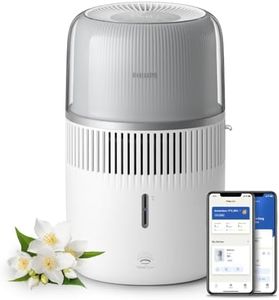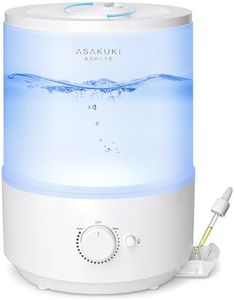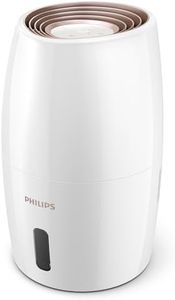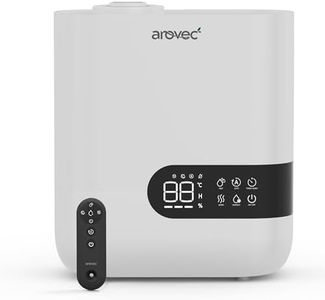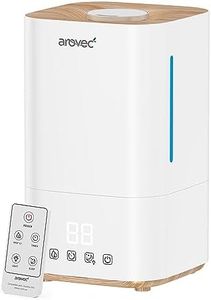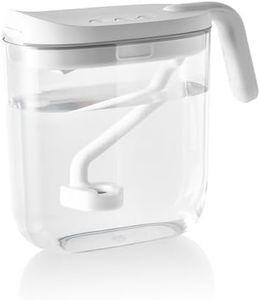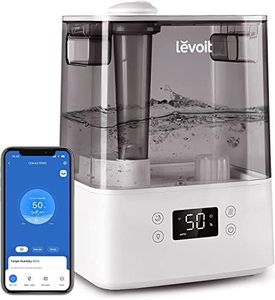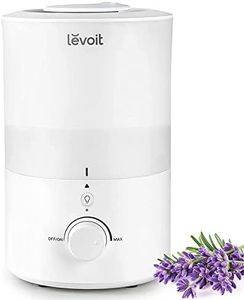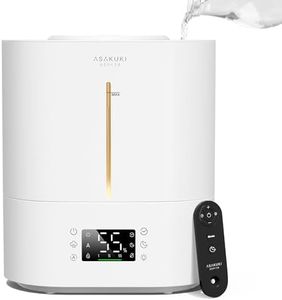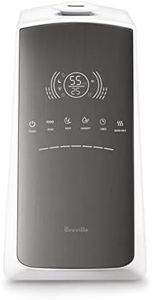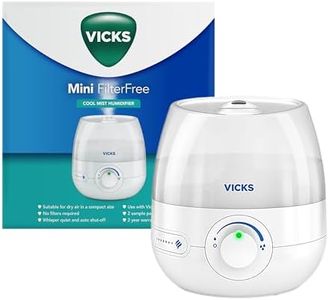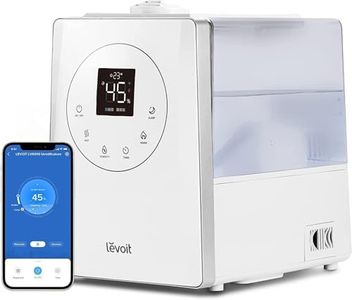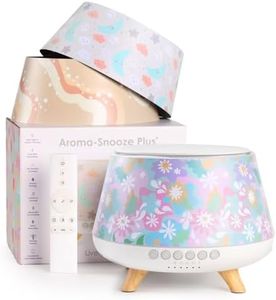We Use CookiesWe use cookies to enhance the security, performance,
functionality and for analytical and promotional activities. By continuing to browse this site you
are agreeing to our privacy policy
10 Best Humidifiers For Babies
From leading brands and best sellers available on the web.Buying Guide for the Best Humidifiers For Babies
Choosing a humidifier for babies is an important decision because babies are more sensitive to dry air, which can affect their skin and breathing. A well-chosen humidifier can help keep the air in your baby's room comfortable and healthy. When shopping, focus on features that ensure safety, ease of use, and effective humidification. Always think about where the humidifier will be used, how often you’ll be maintaining it, and any extra needs unique to your baby's care. A good approach is to identify which features address your specific concerns, such as safety or noise level, and let those needs guide your selection.Mist Type (Cool Mist vs. Warm Mist)Mist type refers to whether the humidifier emits cool or warm moisture into the air. Cool mist models are great for general use in a baby’s room because they are safer; there’s no heating element, which means no risk of burns if touched. Warm mist humidifiers boil water before releasing it as steam, so they can offer extra comfort in winter, but they may get hot and pose a burn risk. For most parents, cool mist humidifiers are a preferred choice for nurseries due to their safety. Consider warm mist only if you live in a cold climate and can ensure the unit is out of reach.
Tank CapacityTank capacity tells you how much water the humidifier can hold and, as a result, how long it can run before needing a refill. Small tanks (under 1 liter) may need frequent filling, which could be inconvenient for overnight use. Medium tanks (1-2 liters) usually provide moisture for most of the night, while large tanks (over 2 liters) can run much longer, sometimes all day. If you want to avoid night-time refills, look for a model with a medium to large tank. However, if you have a tiny room or don’t mind refilling as part of your daily routine, a smaller tank could work fine.
Noise LevelNoise level describes how loud the humidifier is when it’s running. Some humidifiers are nearly silent, while others can produce a humming or gurgling sound. For babies, a quieter machine is usually better to avoid disturbing sleep. Noise levels are often described in decibels (dB), but if you can’t find a specific number, look for descriptions like 'ultra-quiet' or 'whisper-quiet.' Light sleepers and those easily disturbed by noise should prioritize the quietest models possible.
Ease of CleaningEase of cleaning refers to how simple it is to disassemble and clean the parts of the humidifier. Regular cleaning is essential because humidifiers can develop mold or bacteria if not maintained. Models with wide openings and fewer small parts are generally easier to clean. If you have limited time or patience for cleaning tasks, pick a model with a straightforward design and removable parts to make the process less of a hassle.
Automatic Shut-OffAutomatic shut-off is a safety feature that turns the humidifier off when it runs out of water or reaches a certain humidity level. This is critical for baby rooms, as it prevents the risk of the unit overheating and ensures there’s no accidental running when dry. If safety and convenience are important to you, look for models offering this feature, especially if the humidifier is to be used overnight or when you’re not constantly monitoring it.
Filter Type and MaintenanceSome humidifiers use replaceable filters to help purify the water before it becomes mist, while others are filter-free. Filtered models can be good if your tap water has minerals or impurities, but they do require ongoing purchasing and changing of filters. Filter-free machines are often easier and cheaper to maintain but may require regular descaling if you have hard water. Consider your water source and your willingness to perform maintenance when deciding which is best for you.
